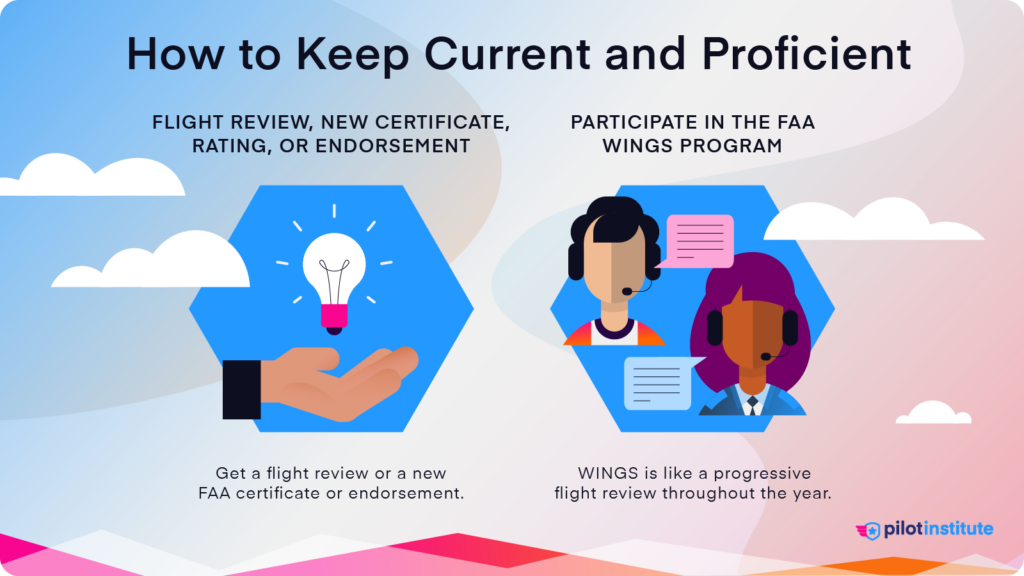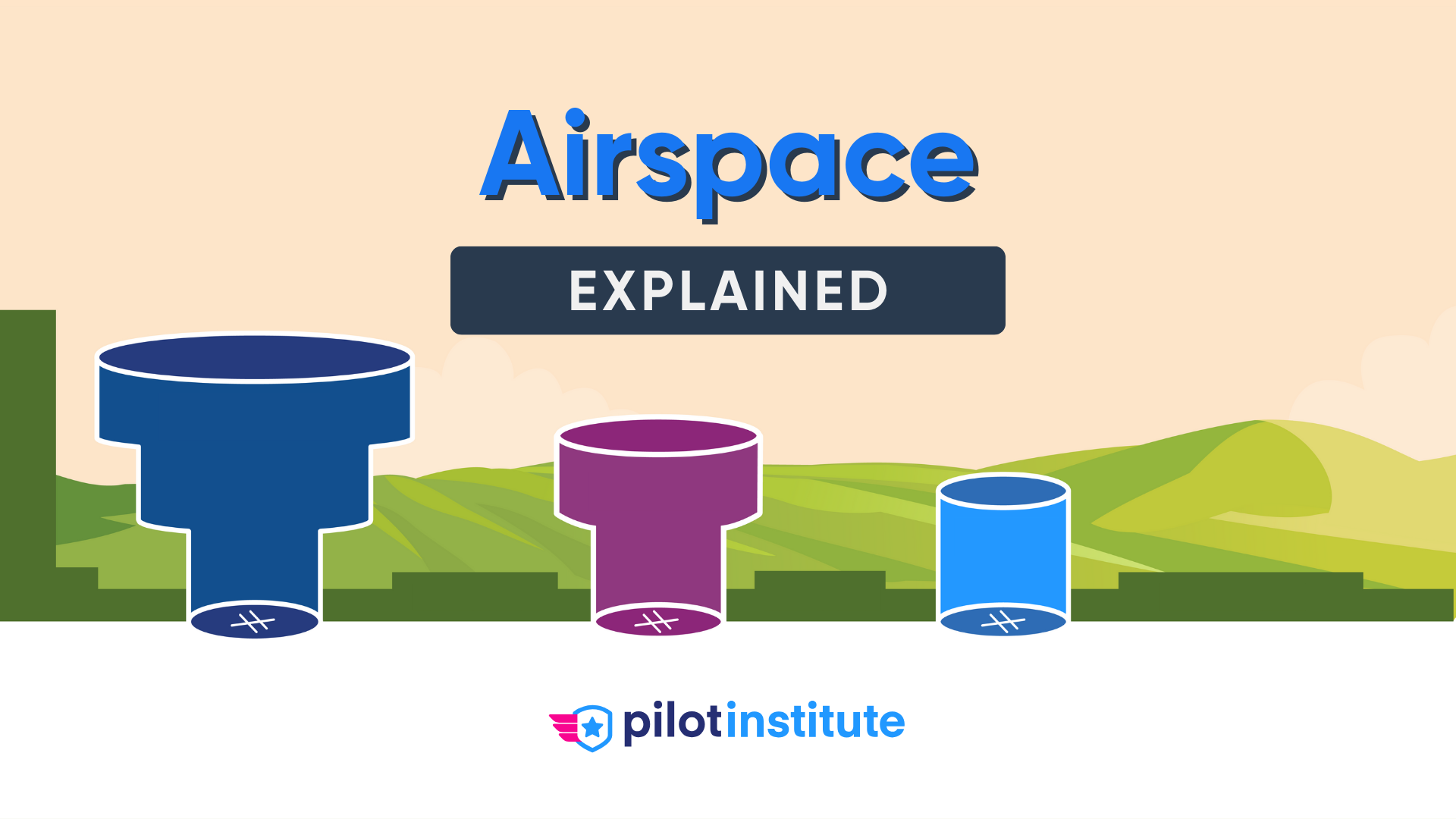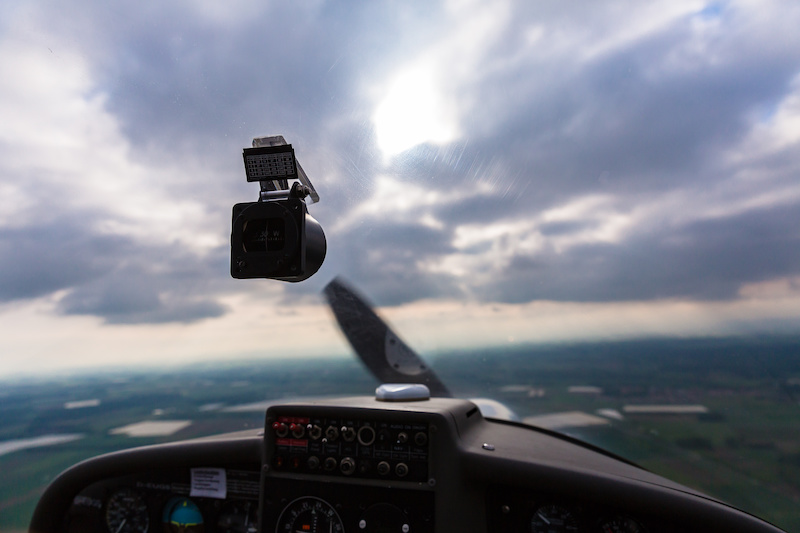-
What is an “Expired” Pilot License?
- Once a Pilot, Always a Pilot
- Wait, is it a License or a Certificate?
- If my certificate doesn’t expire, how do I know I’m not legal to fly?
-
How to Get Back in the Pilot’s Seat
- Obtain a Flight Medical
- Become Proficient
- Regaining Currency
-
How to Keep Current and Proficient
-
Earn a New Certificate, Rating, or Endorsement
-
Participate in the FAA WINGS Program
-
Conclusion
Your pilot license has expired, but you’re ready to jump back in.
There’s just one major issue.
You don’t know what to do and where to begin.
In this guide, we’ll explain the process of renewing your expired license and get you back into the sky safely and legally.
The good news?
It’s actually easier than you think!
What is an “Expired” Pilot License?

Once a Pilot, Always a Pilot
The good news is your pilot license doesn’t “expire.” As the saying goes, “Once a pilot, always a pilot.”
Sometimes, though, life events can hinder our aviation goals, grounding us for a while.
Perhaps it’s been three years since you last flew. Perhaps it’s been thirty years!
If it’s been a long time since you acted as pilot-in-command (PIC), there are things you’ll need to do before you can use your pilot certificate again.
Wait, is it a License or a Certificate?
Before we go on, let’s talk about the pilot license vs. pilot certificate terminology.
Most people–particularly the general public–use the term pilot’s license. While the FAA sometimes uses the term license on their website, they officially call it a pilot certificate.
Using the term license would not confuse anyone. But since we’re talking about legal FAA requirements in this article, we’ll use the term certificate. The FAA likes precision, after all.
If my certificate doesn’t expire, how do I know I’m not legal to fly?
If you want to know whether you’re legal to fly, you need to understand currency. And no, we’re not talking about money.
Being current means that you’ve met the minimum legal requirements set forth by the FAA for your particular pilot certificate or rating. You have to meet these requirements in a specific time frame or they no longer count toward currency.
So, while your certificate doesn’t expire, your currency does. If you haven’t flown in years, your currency will have expired.
In the next section, we’ll go over what you need to do to regain currency and get back into the air safely.
But before we jump right into meeting those currency requirements, let’s talk about some things you’ll need to do first.
How to Get Back in the Pilot’s Seat

Obtain a Flight Medical
To act as PIC of an aircraft, you need to hold a valid FAA medical certification. It’s best to get medically qualified before pulling out your wallet to buy flight time.
The “Typical” FAA Medical
If you go the typical FAA medical route, you’ll need at least a third-class medical to exercise private pilot privileges. You can find the FAA medical requirements in the article FAA Medical Certificate and Exam for Pilots Made Easy.
If the idea of an FAA medical fills you with dread, fear not. There is another option that may not have existed when you last flew: BasicMed.
BasicMed
Enacted on May 1, 2017, BasicMed allows you to avoid the hassle of getting a third-class medical. The main caveat is that you need to have held a valid FAA medical certificate after July 14, 2006. If your last FAA medical expired before this date, you’re required to see an Aviation Medical Examiner (AME) to get a third-class medical first.
If you qualify for BasicMed, you can use any state-licensed physician to perform the physical exam. The physical must adhere to FAA specifications and be redone every four years. If you find FAA medicals a bit nerve-wracking, BasicMed can be a much less stressful way to meet medical requirements.
BasicMed allows you to fly almost all small GA aircraft in most conditions, including under instrument flight rules. For most GA pilots, it’s more than adequate.
Read more about BasicMed requirements and privileges in the article Everything You Need to Know About BasicMed.
Become Proficient
Proficiency vs. Currency
Now that you’re physically cleared to fly again, it’s time to knock the rust off your flying skills and aviation knowledge. The goal: proficiency.
Being proficient means exceeding the minimum FAA currency requirements. A pilot proficient in both aviation knowledge and skill is a safe pilot. They don’t have to sweat over meeting legal minimums. To a proficient pilot, regaining currency is a walk in the park!
Find a Flight Instructor
Flying is a perishable skill. Although a lot of flying skills will come right back to you, other skills might take more work. Radio communications, anyone?
So, how do we get proficient without being able to act as PIC? With a flight instructor, of course.
Find an instructor who you’d like to work with to get you comfortable in the cockpit again. Their training goals should align with yours, which isn’t ticking boxes on a list. With their help, you’ll soon get back to the level of flight proficiency and knowledge expected of your level of certification.
Regulatory and Technological Changes
Nothing stays the same forever, particularly in aviation.
Some rules and regulations have likely changed since you last flew. For example, as of 2010, you need a plastic pilot certificate and a photo ID to act as PIC.
Another example of an important regulatory change is the ADS-B Out requirements that came into effect in 2020.
Depending on how long ago you last flew, the list of new or modified regulations can be substantial. Talk with your instructor about changes you might have missed.
It’s not just new regulations that you need to be aware of. Aviation technology has also changed substantially in recent years. Glass cockpits are common now, and electronic flight bags and GPS are ubiquitous. Weather information sources have seen drastic changes in the last few years.
Make sure you’re up to date on all of the new technology and are comfortable using it. It’s amazing how this new tech can make you a safer pilot when used correctly.
Regaining Currency
So, now you’re proficient in the aircraft. Your aviation knowledge is finely honed. You’re up to date with the changes, and your ADM skills are sharp.
It’s finally time to tackle those currency requirements!
Flight Review
If it’s been more than 24 calendar months since you got your pilot certificate–and we’ll assume it has–you’ll need a flight review before acting as PIC. Hopefully, the instructor you’ve been working with can do the flight review with you.
A flight review is like a routine medical checkup. Instead of evaluating your health, a flight instructor tests your aviation knowledge and flying skills.
The flight review consists of at least one hour of ground training and one hour of flight training. Your instructor will tailor the review to the level of certification you hold and the type of flying you do.
For example, a commercial pilot might be asked when they can and can’t be paid for flying. A private pilot should expect to perform the maneuvers required on the private pilot practical test.
The FAA has increased its emphasis on aeronautical decision-making (ADM) and risk management. Expect to incorporate those knowledge areas into your flight review.
Your instructor will endorse your logbook once you’ve passed the flight review. You’re now current to act as PIC for the next 24 calendar months. Congratulations!
Read the complete flight review regulations in 14 CFR § 91.56.
Passenger Currency
Although you’re legal to act as PIC, you’re not yet allowed to carry any passengers with you. “Hundred-dollar hamburgers” on your own just isn’t much fun, so let’s fix that.
To carry passengers during the daytime, you need to have completed three takeoffs and three landings within the preceding 90 days. The landings must be performed in an aircraft of the same category, class, and type as the one in which you’ll be carrying passengers. Make sure you’ve recorded the takeoffs and landings in your logbook.
The rules are different for carrying passengers at night. You need to perform the three takeoffs and three landings between one hour after sunset and one hour before sunrise. The landings also need to be to a full stop, so touch-and-goes don’t count towards night currency.
If you meet night passenger currency requirements, you’re legal for night and day. Three takeoffs and landings performed during the day do not count towards night currency.
Sometimes it pays to stay up late!
Read the passenger currency requirements in 14 CFR § 61.57.
How to Keep Current and Proficient

Keeping current is simple: maintain a valid medical, take a flight review every 24 calendar months, and perform three landings and takeoffs within the preceding 90 days. You can keep doing this indefinitely and meet the letter of the law.
Keeping proficient is more complicated. Just because a pilot is current does not mean they’re as competent as they should be. Flying solo after a 23-month break post-flight review may be legal, but it’s by no means a smart thing to do.
Training consistently and to a high standard is the best way to maintain currency and proficiency.
Let’s talk about a couple of ways you can do that.
Earn a New Certificate, Rating, or Endorsement
Getting a flight review isn’t the only way to stay current. Getting additional FAA certification also counts.
For example, if you’re a private pilot and you earn your commercial pilot certificate, it meets the requirements of a flight review. Adding an instrument rating counts as well. The 24 calendar month “countdown” starts over with each certification.
What better way to both meet the legal requirements and improve your skills (and safety) as a pilot?
Participate in the FAA WINGS Program
Participating in the FAA’s WINGS Pilot Proficiency Program satisfies the flight review requirement. It improves your pilot proficiency as well.
WINGS is like a progressive flight review. Instead of trying to cram training into one flight, WINGS allows you to train in smaller, more focused chunks of time.
Instead of the “flying portion” of the flight review, you can fly regularly with your instructor throughout the year. This gives you more opportunities to experience different flying conditions with your instructor.
Instead of the “ground portion” of the flight review, you take online ground courses in various subjects from the comfort of your own home. What better way to spend a rainy or icy afternoon?
Conclusion
Getting back in the cockpit can seem daunting, but if you take things step by step and get the help you need, you’ll be back in the sky before you know it.
Find an experienced instructor who you feel comfortable working with and who will help you keep not just current but proficient. Think of it as an opportunity to be an even better pilot than you were before.
Be ready to challenge yourself, but most of all, have fun!
If you want to read more about what to expect during a flight review, check out the article Flight Review – What it Takes to Become Current as a Pilot.



